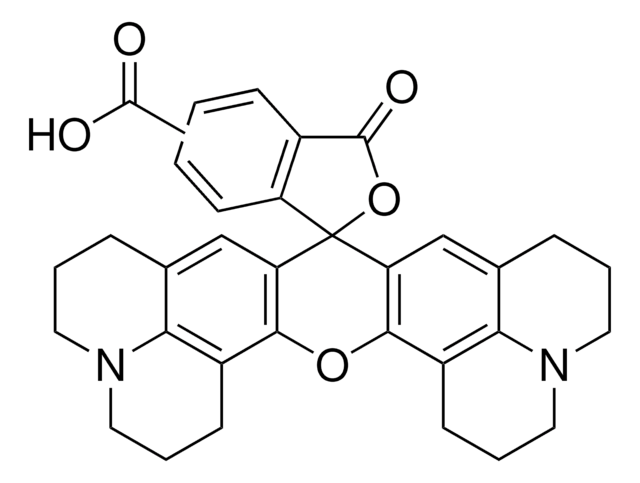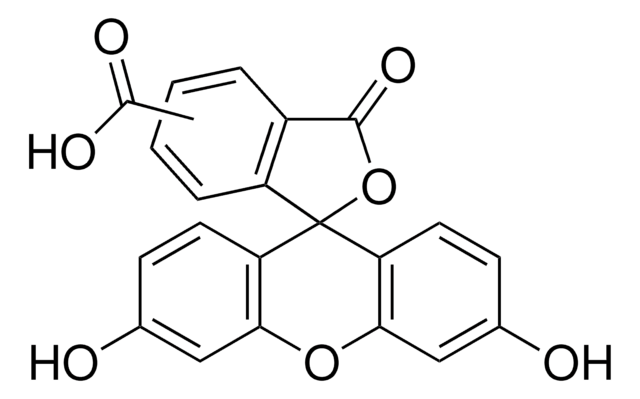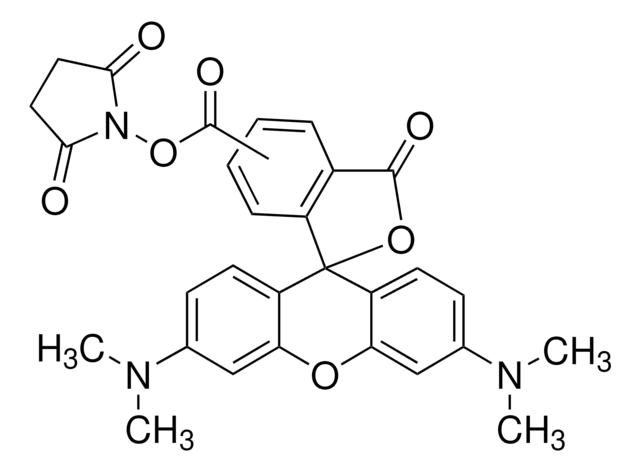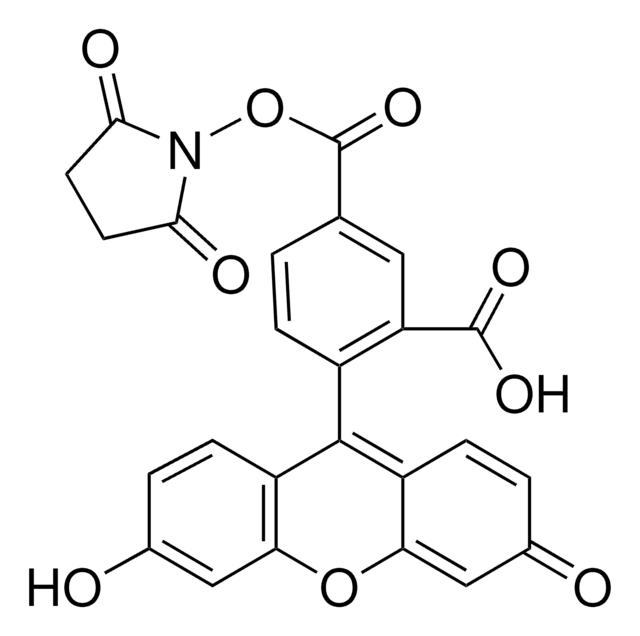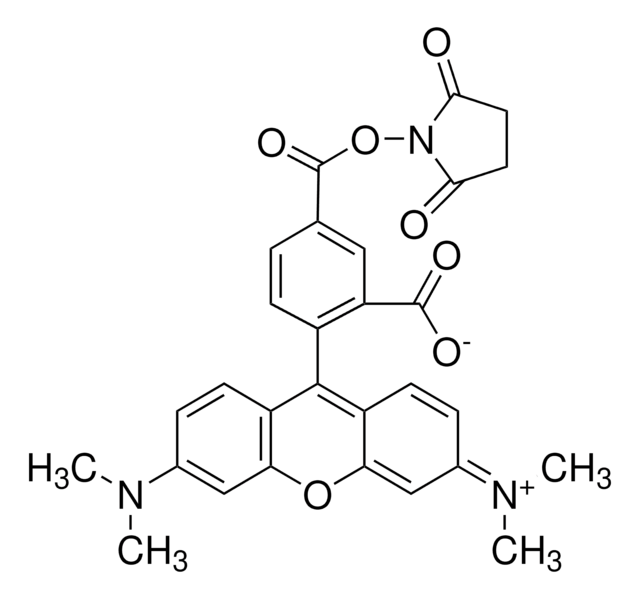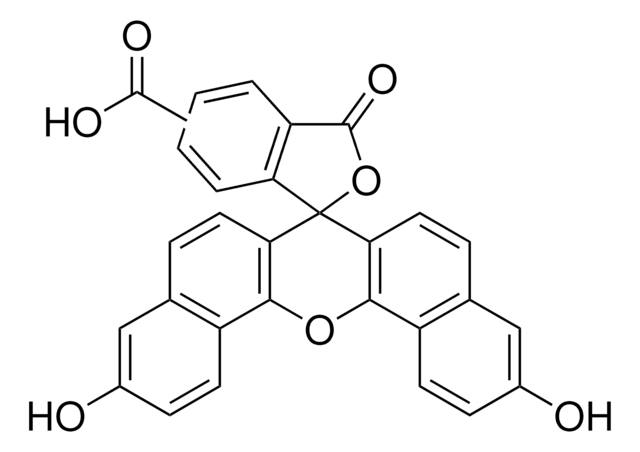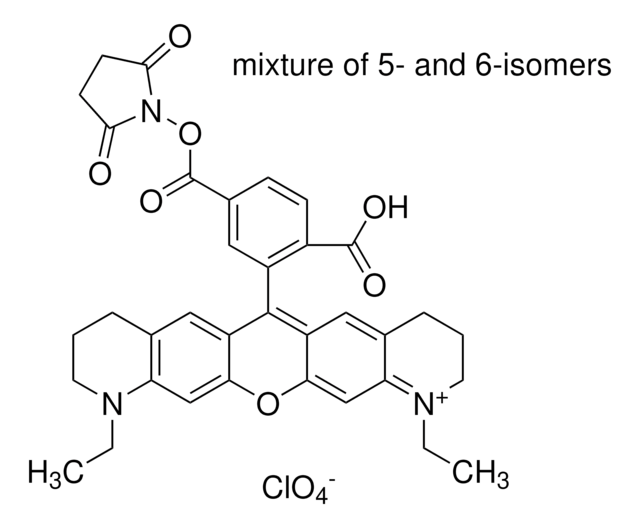41969
5-Carboxy-X-rhodamine N-succinimidyl ester
BioReagent, suitable for fluorescence
About This Item
Productos recomendados
Línea del producto
BioReagent
Nivel de calidad
formulario
powder
solubilidad
DMF: soluble
acetonitrile: soluble
fluorescencia
λex 575 nm; λem 600 nm in 0.1 M phosphate pH 7.0
idoneidad
suitable for fluorescence
temp. de almacenamiento
−20°C
cadena SMILES
[O-]C(=O)c1cc(ccc1-c2c3cc4CCCN5CCCc(c45)c3[o+]c6c7CCCN8CCCc(cc26)c78)C(=O)ON9C(=O)CCC9=O
InChI
1S/C37H33N3O7/c41-29-11-12-30(42)40(29)47-37(45)22-9-10-23(26(19-22)36(43)44)31-27-17-20-5-1-13-38-15-3-7-24(32(20)38)34(27)46-35-25-8-4-16-39-14-2-6-21(33(25)39)18-28(31)35/h9-10,17-19H,1-8,11-16H2
Clave InChI
BTTBJYLMDASSAS-UHFFFAOYSA-N
Aplicación
Otras notas
Palabra de señalización
Warning
Frases de peligro
Consejos de prudencia
Clasificaciones de peligro
Eye Irrit. 2 - Skin Irrit. 2 - STOT SE 3
Órganos de actuación
Respiratory system
Código de clase de almacenamiento
11 - Combustible Solids
Clase de riesgo para el agua (WGK)
WGK 3
Punto de inflamabilidad (°F)
Not applicable
Punto de inflamabilidad (°C)
Not applicable
Equipo de protección personal
dust mask type N95 (US), Eyeshields, Gloves
Certificados de análisis (COA)
Busque Certificados de análisis (COA) introduciendo el número de lote del producto. Los números de lote se encuentran en la etiqueta del producto después de las palabras «Lot» o «Batch»
¿Ya tiene este producto?
Encuentre la documentación para los productos que ha comprado recientemente en la Biblioteca de documentos.
Artículos
Fluorescent Labeling of Peptides
Chromogenic and fluorogenic derivatives are invaluable tools for biochemistry, having numerous applications in enzymology, protein chemistry, immunology and histochemistry.
Nuestro equipo de científicos tiene experiencia en todas las áreas de investigación: Ciencias de la vida, Ciencia de los materiales, Síntesis química, Cromatografía, Analítica y muchas otras.
Póngase en contacto con el Servicio técnico